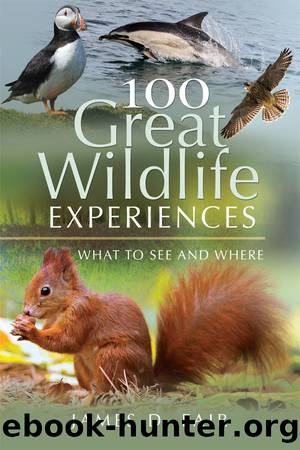100 Great Wildlife Experiences by Fair James D.;

Author:Fair, James D.;
Language: eng
Format: epub
Tags: NATURE/Animals/Wildlife
Publisher: Pen & Sword Books
Published: 2019-04-29T00:00:00+00:00
42 WILD BOAR
FOREST OF DEAN
Family friendly
âWeâre going on a boar hunt!â
Budget friendly
You might have to pay for parking, but otherwise free
Amateur friendly
Recognising field signs of boar require some expertise, boar themselves are unmissable
Best time of year
All year round
Toilets
Cafe
âIâm just going to dive round the back of that thicket, â Gareth said. âThereâs a boar in there somewhere, and I reckon I can flush it out.â
âRightoâ, âGreatâ, and âIs that really such a good idea?â I thought, but didnât try to stop him. Though Iâd only met Gareth for the first time about two hours earlier, he seemed to know what he was doing, but he was nevertheless planning to sneak up on an animal weighing up to 100kg and that can run at 40kph â rather him than me was my over-riding emotion.
So, Gareth disappeared into the thicket, and after a few minutes, there was some brief rustling in the stand of young pine trees and out shot an animal that looked as big as a Shetland pony. Unmistakably pig-like, but dark, hairy and somewhat menacing, it bolted across the track some 10 of 15 metres from where I was standing and disappeared into a similar thicket on the other side.
Itâs believed that wild boar went extinct in Britain in the thirteenth century and were absent from our countryside for the next 700 years or so. Then farming them for their meat started here in the 1980s, and though itâs not clear exactly when animals began escaping (or being deliberately released) into the countryside, by 1998, they were well and truly back.
There are number of populations all around Britain, but the Forest of Dean has the most substantial one. Itâs probably fair to say they divide opinion; some locals blame them for digging up their lawns and chasing dogs, while many others feel we should welcome them as part of our natural fauna.
Thereâs also a fair bit of disagreement about how many there are, with population estimates beginning at around 800. That doesnât mean theyâre easy to see, but signs of their presence are everywhere, once you know what they are.
First, look for where they have dug up turf, which can be seen throughout the forest, most easily by the roadsides. It looks similar to what badgers do to garden lawns, but on an industrial scale. Then there are their droppings, which are black, quite large and irregularly shaped. Footprints are the classic cloven hoof shape also left by deer, but youâd need to be skilled to tell the two apart.
DO IT YOURSELF
Wild boar may be found almost anywhere in the Forest of Dean, but one area you could try is woodland surrounding the Sculpture Trail, just to the east of Coleford. www.forestofdeansculpture.org.uk 0300 067 4800
Youâll have a better chance of seeing wild boar if you go either at first light or late afternoon/dusk. Thereâs a lot more information about wild boar on the British Wild Boar website www.britishwildboar.org.uk
Though large and bulky animals, wild boar are not dangerous to people.
Download
This site does not store any files on its server. We only index and link to content provided by other sites. Please contact the content providers to delete copyright contents if any and email us, we'll remove relevant links or contents immediately.
The Lonely City by Olivia Laing(4122)
Animal Frequency by Melissa Alvarez(3756)
All Creatures Great and Small by James Herriot(3521)
Walking by Henry David Thoreau(3236)
Exit West by Mohsin Hamid(3189)
Origin Story: A Big History of Everything by David Christian(3141)
COSMOS by Carl Sagan(2955)
How to Read Water: Clues and Patterns from Puddles to the Sea (Natural Navigation) by Tristan Gooley(2865)
Hedgerow by John Wright(2780)
The Inner Life of Animals by Peter Wohlleben(2773)
Origin Story by David Christian(2687)
How to Read Nature by Tristan Gooley(2668)
Project Animal Farm: An Accidental Journey into the Secret World of Farming and the Truth About Our Food by Sonia Faruqi(2666)
How to Do Nothing by Jenny Odell(2647)
A Forest Journey by John Perlin(2588)
Water by Ian Miller(2588)
The Plant Messiah by Carlos Magdalena(2458)
A Wilder Time by William E. Glassley(2366)
Forests: A Very Short Introduction by Jaboury Ghazoul(2336)
